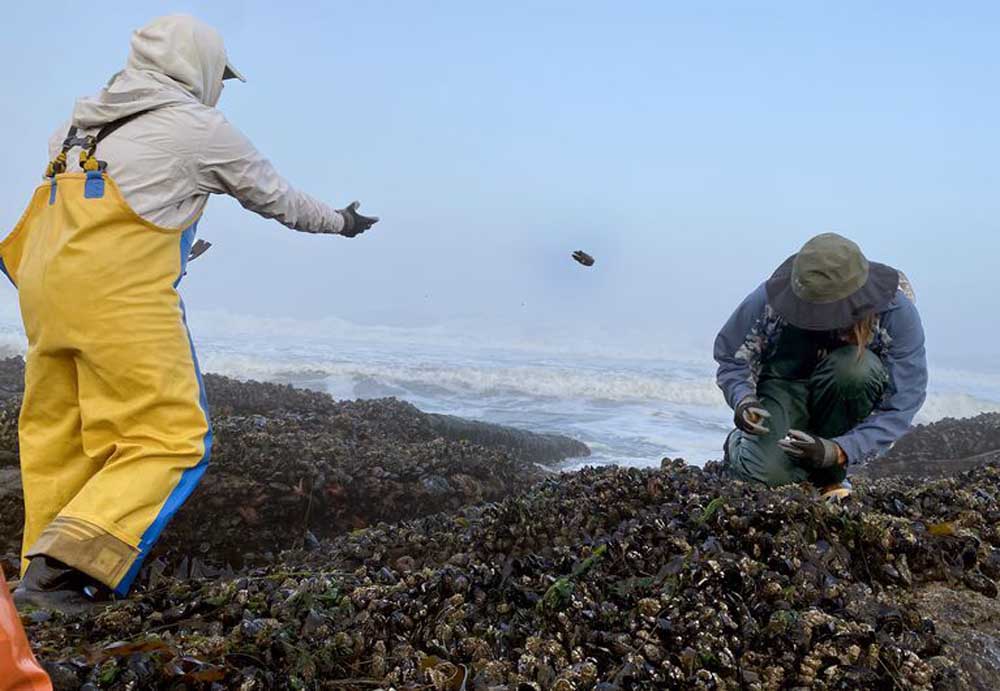Mussel harvesting along the Oregon Coast has been suspended due to the detection of dangerous paralytic shellfish toxins in recent samples. The Oregon Department of Agriculture (ODA) and the Oregon Department of Fish and Wildlife (ODFW) announced the halt on September 30, 2025, affecting coastal areas from the Washington border to Florence. Consuming contaminated mussels poses serious health risks, including numbness, nausea, vomiting, and potentially paralysis.
The source of the toxin is phytoplankton, which naturally produces these harmful substances. Mussels are particularly susceptible to accumulating these toxins, as noted by Matt Hunter, the ODFW shellfish project leader. He described mussels as “the canary in the mine shaft,” highlighting their unique ability to concentrate paralytic shellfish toxins (PSP) more than other marine species.
The situation has become increasingly concerning since a significant outbreak of PSP in 2024 resulted in over 40 illnesses, with several individuals requiring hospitalization. Hunter remarked that the experience from last year has kept authorities vigilant, stating, “everything has us on our toes.” He explained that mussels can rapidly accumulate toxins, complicating the monitoring process.
Testing for PSP is limited to periods of low tide, which means researchers cannot determine if toxin levels are rising or falling without multiple tests. The ODA and ODFW plan to conduct testing biweekly. Harvesting may resume only after two consecutive tests confirm safe toxin levels, with the earliest possible reopening anticipated for the end of October.
Alex Manderson, a shellfish specialist with the ODA food safety division, underscored the uncertainty surrounding the conditions that lead to increased biotoxin production. While changes in temperature, light intensity, and water chemistry are suspected factors, the exact causes remain poorly understood. Manderson pointed out that while current biotoxin levels in the water may not threaten humans or pets, mussels can concentrate these toxins to dangerous levels.
Even cooking contaminated mussels does not eliminate the risk. Manderson cautioned, “It is basically a poison, so it doesn’t grow or diminish. It also cannot be destroyed by cooking or freezing.” Current toxin levels, while not acutely lethal, are still significant. He stated, “The levels that we saw are not super high, but definitely not a thing to mess about with.”
Ingesting contaminated mussels can lead to symptoms such as “numbness, tingling of the lips and tongue, and gastrointestinal issues,” according to Hunter. He reminded the public that toxin levels can fluctuate rapidly, referencing the 2024 outbreak when levels surged from below the closure threshold to an alarming 69 times the threshold in just four days.
As authorities monitor the situation closely, the safety of both consumers and marine life remains a top priority. The temporary halt in mussel harvesting serves as a precautionary measure to prevent any health risks associated with paralytic shellfish poisoning.
